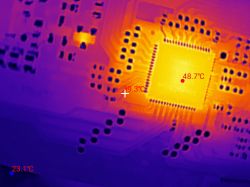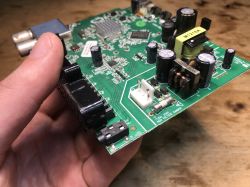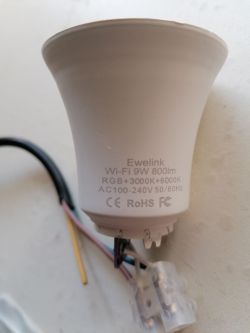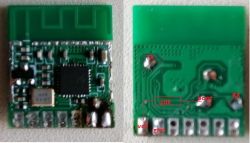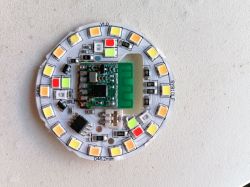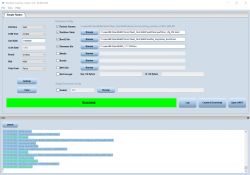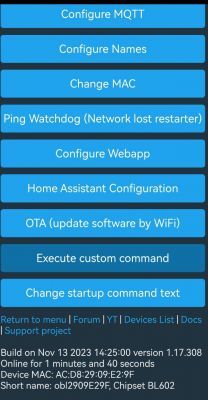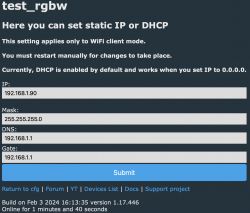I've got a this sensor from Ai-Thinker: RD-01.
it is based on BL602 + S3KM111L. With the stock firmware I can use the radar only with UART connection to another MCU.
But, since it uses a BL602, I think that it will be interesting to have a firmware that already sends status and data on MQTT via WIFI and, why not, add some other sensors on free GPIO available (like a DHT11/22 or BME280/680 or BH1750)
Documentation is here: https://docs.ai-thinker.com/en/rd-01
Actual firmware is here: https://github.com/Ai-Thinker-Open/Ai-Thinker-Radar
Is it possible to support this sensor with OpenBK7231T_App?
I can do debugging, testing or any other things that could help (sorry, I'm not a programmer)
Thank you very much
it is based on BL602 + S3KM111L. With the stock firmware I can use the radar only with UART connection to another MCU.
But, since it uses a BL602, I think that it will be interesting to have a firmware that already sends status and data on MQTT via WIFI and, why not, add some other sensors on free GPIO available (like a DHT11/22 or BME280/680 or BH1750)
Documentation is here: https://docs.ai-thinker.com/en/rd-01
Actual firmware is here: https://github.com/Ai-Thinker-Open/Ai-Thinker-Radar
Is it possible to support this sensor with OpenBK7231T_App?
I can do debugging, testing or any other things that could help (sorry, I'm not a programmer)
Thank you very much



